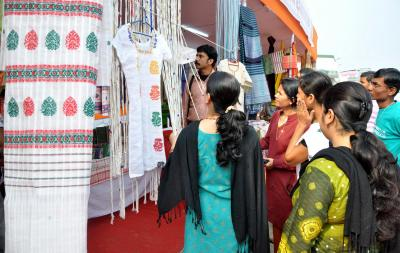GST 2.0 poised to rev up economic growth in Assam
By IANS | Updated: September 29, 2025 20:30 IST2025-09-29T20:28:48+5:302025-09-29T20:30:13+5:30
New Delhi/Guwahati, Sep 29 The recent GST rate cuts are expected to rev up economic growth in Assam ...

GST 2.0 poised to rev up economic growth in Assam
New Delhi/Guwahati, Sep 29 The recent GST rate cuts are expected to rev up economic growth in Assam across the state’s lush tea gardens, exquisite handloom silks, vibrant handicrafts, and tourism sectors as input costs drop, price competitiveness improves, and demand rises, according to an official statement issued on Monday.
Tea estates and small growers stand to benefit from lower value-chain costs, handloom and craft cooperatives can price more affordably without burdening artisans’ margins, and tourism and hospitality will become more accessible to visitors. Taken together, these shifts will mean steadier orders for entrepreneurs and more stable earnings for workers, artisans, and farmers, the statement said.
Assam’s tea gardens employ around 6.84 lakh workers, with many families living in estate quarters that provide basic healthcare, rations, and schools.
With tea now taxed at 5 per cent GST, shelf prices are estimated to fall by about 11 per cent. This reduction in prices is especially encouraging for exports. India shipped 255 million kg of tea in 2024, reaching a 10-year high. Lower costs are expected to sharpen Assam’s global competitiveness, the statement said.
On the domestic side, a major share of Assam’s tea passes through the Guwahati Tea Auction Centre, which handles a large fraction of tea bound for Indian markets. Cheaper prices for buyers will result in higher volumes sold, potentially lifting estate revenues and wages of the workers who power this industry.
The muga silk industry of Assam, operating mainly in Sualkuchi (Kamrup), Lakhimpur, Dhemaji, and Jorhat, along with other sericulture clusters across the state, is a legacy carried by women weavers. The reduced 5 per cent GST rate on handloom and handicraft items will bring relief to weavers, who can now sell in competitive markets and earn better margins. It will also boost exports, as niche luxury buyers may be more inclined to purchase when prices are marginally lower.
The entire handloom sector in Assam stands to gain from the GST reforms. In a state with more than 12.83 lakh weavers and about 12.46 lakh looms, the impact is far-reaching.
The GST rate cut on handlooms and crafts will also benefit Assam Jaapi, Asharikandi terracotta, Mishing handloom, Pani Meteka, and Bihu dhol, among others, across Goalpara/Dhubri, the Majuli/Mishing belts, and Nalbari/Barpeta/ Kamrup.
Tourism has become more affordable with hotels up to Rs 7,500 taxed at 5 per cent GST, boosting a sector that supports more than 6.51 lakh jobs in Assam. The state accounted for Rs 221.95 crore in revenue from tourist lodges alone, including visitors from Europe, Asia, the Middle East, and domestic markets. Hospitality essentials such as toiletries, tableware and packaged water are now also taxed at a reduced rate of 5 per cent, which lowers costs for tourists, giving a further push to the sector.
The GST rate cut also benefits Assam’s GI farm basket as Joha Rice, Boka Saul rice and Kaji Nemu products, and Tezpur Litchi will see an increase in demand and higher farm incomes. The GST reforms have touched these traditional livelihoods too, mainly by reducing taxes on value-added products made from local crops, thus encouraging farmers to diversify and reach new markets.
Disclaimer: This post has been auto-published from an agency feed without any modifications to the text and has not been reviewed by an editor
Open in app